Small intestine location
- begins at the pyloric sphincter of the stomach
- coils through the abdominal cavity
- opens into large intestine
- 10 ft long
Where does most digestion and absorption of nutrients occur
Small intestine
Regions of small intestine
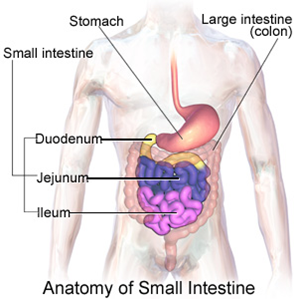
- Duodenum (10 in)
- Jejunum (3 ft)
- Ileum (6 ft)
Layers of small intestine
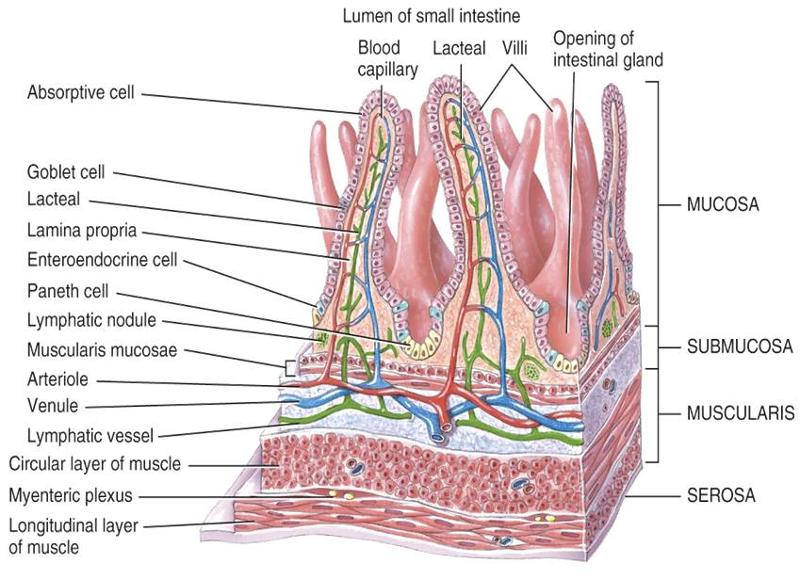
- Mucosa
- Submucosa
- Muscularis
- Serosa-visceral
Mucosa - Sm Intestine
- Absorptive and mucous-secreting goblet cells
- Intestinal glands (secrete intestinal juice)
- endocrine cells
- Lymph tissue
Submucosa - Sm Intestine
Duodenal glands
- secrete mucus
- neutralizes gastric acids
Muscularis - Sm Intestine
Two layers of smooth muscle
Serosa - Sm Intestine
Visceral peritoneum
Plicae Circulares
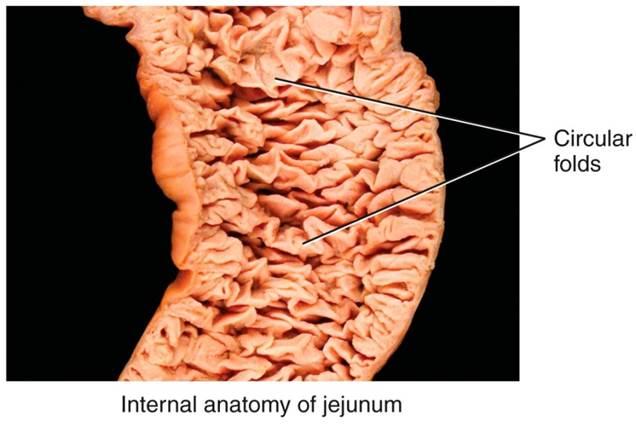
Permanent ridges of the small intestines mucosa and submucosa
- encourages turbulent flow of chyme
- increases the surface area for absorption
Villi
Finger like projections of the small intestines mucosa that increase the surface area for absorption
- Each villus contains a capillary network where nutrients are absorbed and can enter the blood or lymphatic system
Microvilli
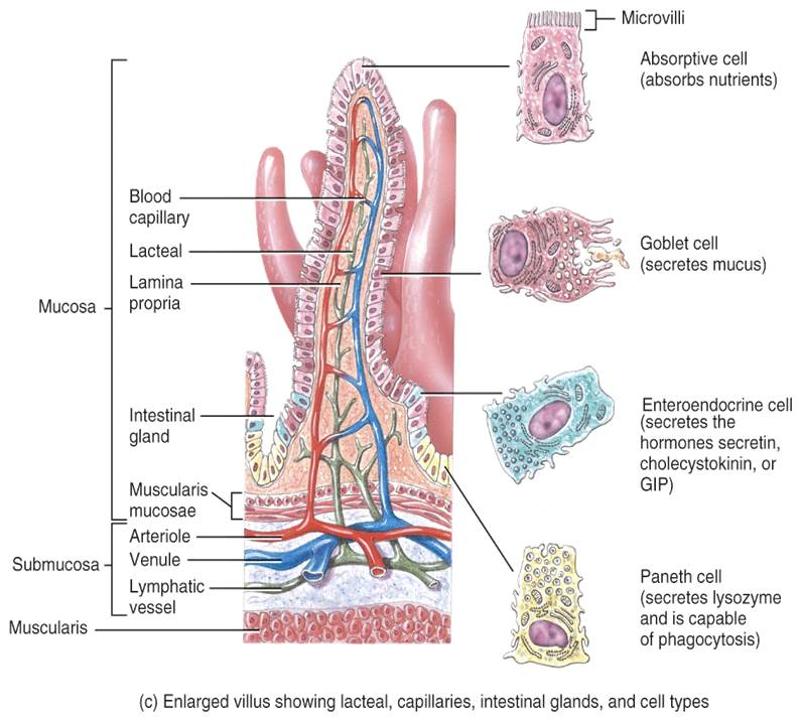
- Projections of the apical membrane of the absorptive cells
- Appear in microscope as a fuzzy line called the brush border
- contributes to increase surface area
What contributes to the surface area of the small intestine allowing for maximum reabsorption of nutrients
- plicae circulares
- villi
- microvilli
What are the end products of protein digestion
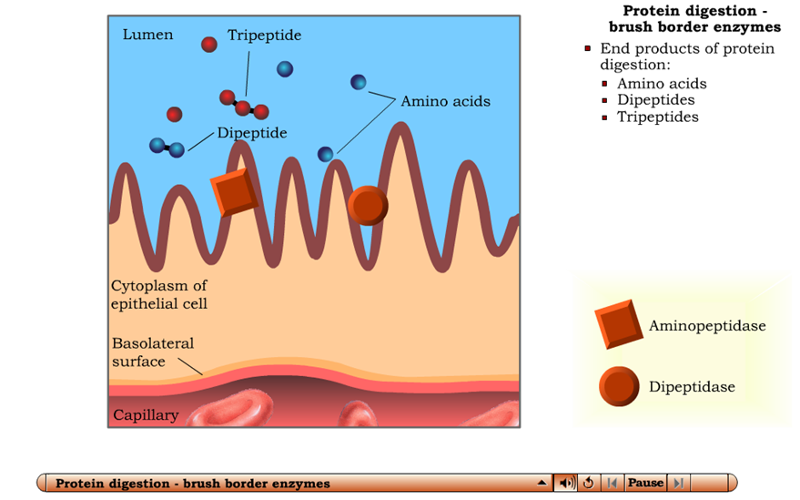
- Amino acids
- Dipeptides
- Tripeptides
(Brush Border enzymes)
Mechanical digestion - Sm Intestine
Two types of movement:
- Segmentations
- Migrating motility complexes
Segmentations
A type of movement during mechanical digestion used to mix chime and bring it in contact with the mucosa for absorption
Migrating motility complexes
A type of movement during mechanical digestion that occur after absorption and pushes chime toward the large intestine
Chemical digestion - Sm Intestine
Begins with Cyme entering the small intestine to begin the process of digesting materials
Chyme
Substance that passes from stomach to small intestine that contains partially digested carbs, proteins and lipids
Digestion in the small intestine is dependent on which materials being digested
- Carbs
- proteins
- lipids
- nucleic acids
How are carbs broken down in the small intestine
Brush border enzymes break them down into monosaccharides
How are proteins broken down in the small intestine
They are broken down along the brush border by two peptidases:
- Aminopeptidase
- Dipeptidase
How are lipids broken down in the small intestine
- They are digested by enzymes called lipases
- Undergo emulsification by bile salts
How are nucleic acids broken down in the small intestine
They are digested by pancreatic juices and brush border enzymes
What is absorbed in the small intestine
- 90% of all intestinal absorption
- Proteins, amino acids, nucleic acids and sugars
- Dietary lipids
- Water
- Fats
How are proteins, amino acids, nucleic acids and sugars absorbed in the small intestine
Absorbed into the blood capillaries by facilitated diffusion or active transport
How are dietary lipids absorbed in the small intestine
Absorbed via simple diffusion
How is water absorbed in the small intestine
Absorbed via osmosis
How are fats absorbed in the small intestine
Aggregate into globules called chylomicrons
Chylomicrons
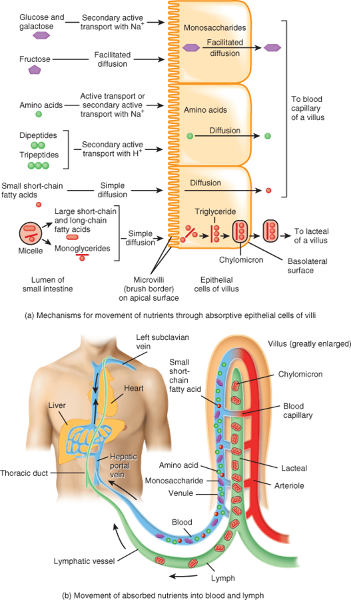
Too large for diffusion into blood capillaries, enter specialized lymphatic vessels called lacteals and eventually mix with blood